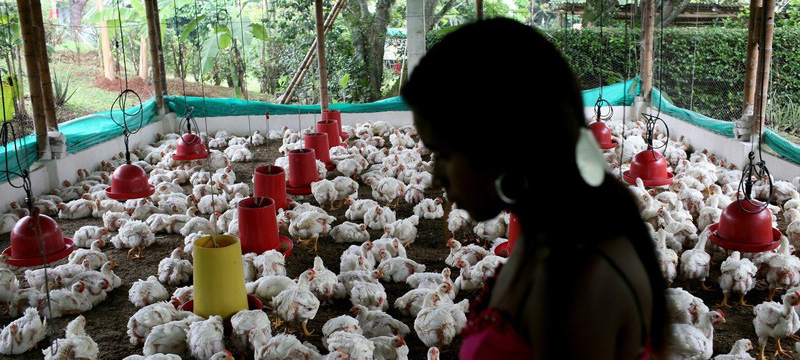 Pandemic
Pandemic
The ongoing global spread of “bird flu” infections to mammals including humans is a significant public health concern, senior UN medics said on Thursday, as they announced new measures to tackle airborne diseases.
Dr Jeremy Farrar, Chief Scientist at the World Health Organization (WHO), said that the avian influenza virus - which is also known as H5N1 - has had an “extremely high” mortality rate among the several hundred people known to have been infected with it to date.
To date, no human-to-human H5N1 transmission has been recorded.
“H5N1 is (an) influenza infection, predominantly started in poultry and ducks and has spread effectively over the course of the last one or two years to become a global zoonotic – animal – pandemic,” he said.
“The great concern, of course, is that in doing so and infecting ducks and chickens - but now increasingly mammals - that that virus now evolves and develops the ability to infect humans. And then critically, the ability to go from human-to-human transmission.”
Cattle mystery
Commenting on an ongoing outbreak of H5N1 virus among dairy cows in the United States, the WHO senior official urged further close monitoring and investigation by public health authorities, “because it may evolve into transmitting in different ways”.
He added: “Do the milking structures of cows create aerosols? Is it the environment which they're living in? Is it the transport system that is spreading this around the country? This is a huge concern and I think we have to … make sure that if H5N1 did come across to humans with human-to-human transmission, that we were in a position to immediately respond with access equitably to vaccines, therapeutics and diagnostics.”
Equal to next pandemic
The development comes as the WHO announced updated language to describe airborne pathogens, in a bid to increase international cooperation in the event of a new – and expected – global pandemic.
The initiative was originally sparked by the COVID-19 emergency and the recognition that there was a lack of commonly agreed terms among medics and scientists to describe how the coronavirus was transmitted, which increased the challenge of overcoming it, Dr Farrar explained.
Global appeal
To counter this, the WHO led consultations with four major public health agencies from Africa, China, Europe and the United States, before announcing agreement on a number of agreed new terms. These include “infectious respiratory particles” or “IRPs”, which should be used instead of “aerosols” and “droplets”, to avoid any confusion about the size of the particles involved.
Over and above the new terminology, the initiative cements the commitment of the international community to tackle ever “more complex and more frequent epidemics and pandemics”, Dr Farrar told journalists in Geneva.
“It's a hugely important first step. But next, we need to keep the disciplines, the experts together.
"We're using the same terminology, the same language, and now we need to do the science that provides the evidence on tuberculosis, on COVID and other respiratory pathogens, so that we know how to control those infections better than we have done in the past.”
On the potential HN51 public health risk, the WHO Chief Scientist cautioned that vaccine development was not “where we need to be”. Neither was it the case that regional offices and country offices and public health authorities around the world have the capability to diagnose H5N1, he noted.
Support Our Journalism
We cannot do without you.. your contribution supports unbiased journalism
IBNS is not driven by any ism- not wokeism, not racism, not skewed secularism, not hyper right-wing or left liberal ideals, nor by any hardline religious beliefs or hyper nationalism. We want to serve you good old objective news, as they are. We do not judge or preach. We let people decide for themselves. We only try to present factual and well-sourced news.






